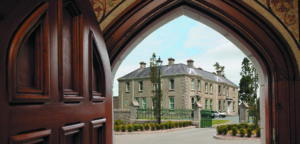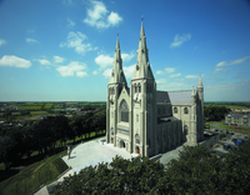CARDINAL O’FIAICH LIBRARY AND ARCHIVE
CATHOLICISM & THE GAA: A PERSONAL PERSPECTIVE
GIVEN BY
CARDINAL SEÁN BRADY
SATURDAY 14 MARCH 2009
I am very pleased and honoured to be asked to contribute to this Congress. I congratulate the Association and the Cardinal Ó Fiaich Library and Archive on organising such an impressive Congress. The theme is well chosen and timely. In an age where individualism is rampant and volunteerism is on the decline, it is good to reflect on the benefits and advantages which working for the community brings to that community. It is good to recognise the joys to which that type of work gives rise. It is important not just to play lip-service to the value of community work. It is also important to identify the things which threaten those ideals of amateurism and to oppose them.
I welcome you here to this hill and to this place and indeed I recall the first occasion I came here. It wasn’t in the cause of religion. It was way back in 1954 to the MacRory Cup Final. We travelled from St. Patrick’s College in Cavan to play Abbey CBS, Newry by train. Unfortunately the referee, Mr Gallagher from Omagh died during the match and it had to be, of course, called off. We were winning at the time and unfortunately we lost the replay.
This morning gives me an opportunity to thank the GAA for the enjoyment I have derived from so many activities of the Association. Not just from playing but from coaching, training, attending meetings. I am very grateful also for: the friends I made in the Association, especially the friends who give and gave so generously of their time.
Yesterday you had here one of the greats of Cavan football, Mickey Vince. He was admired for his exploits on the field of course having played in several All-Ireland finals, winning three All-Ireland medals but I admire him more for what he put into the Association after he retired from playing. He managed teams, at County and Provincial levels; he refereed; he was yesterday, at the tea break, recalling, with Seán O’Neill, the battle of Ballinascreen in 1968 when he was refereeing Down and Derry in what would have been a day out for the yellow and the red flags now apparently. I was struck be the fact that quite soon after he retired he was already involved.
I remember, as a minor, being brought by him and by Victor Sherlock in their car to minor trials. I wonder is that happening now? Are young players, immediately after they retire, putting enough back into the Association?
I am grateful for the friends I made and the opponents I met and learned to respect. I am grateful too for the moments of nervousness and anxiety which I endured before matches and which I now realise were preparing me, possibly, for the other challenges and, indeed, for the defeats of life.
One of the great things of taking part in games is that you know, you win some and you lose some and you realise that we have God-given gifts which enable us to win but we are also limited – very limited – and sometimes weaker and we will always meet people who are better and that is an important lesson.
After spending a lot of time as part of an organisation that lays such emphasises on the community and on the Club, it was a great consolation to me personally to discover that one of the basic principles of our faith is the principle of communion. Our way to God and God’s way to us is a communal way. What does that mean?
Our religion brings about an encounter between ourselves and our God. It is a personal and individual meeting with our God. But this encounter is made possible only with the help of a community of faith.
So I don’t really regret the many hours I spent, especially in the 1970s, attending meetings, coaching teams at club and college level. I know that is exactly why the GAA people are often the back bone of the parish. It is good to be part of a team – that loses occasionally and reveals our limitations.
When I was preparing this talk, I had to go to Belfast on Thursday afternoon to a Press Conference. It was hosted by six leaders of the main Christian churches here in Ireland:
1. The Church of Ireland
2. Presbyterian
3. Methodist
4. Irish Council of Churches
5. Evangelical and our own
6. Catholic Church.
The purpose of that meeting was to express sympathy but, above all, it was to provide people with a means of expressing their rejection of violence and of the killings and the murders which took place last weekend.
I want to repeat that call here this morning to you. It was a call to pray – a call to pray in the privacy of your own heart or in your families or in your church or in the church of another community that the peace which we have been enjoying in this part of the world for the last number of years may not be disrupted.
One of the initiatives that came out of that meeting was the suggestion that we would wear a piece of purple ribbon to express our rejection of violence. Purple is the colour associated with Lent. Lent is a time of prayer and a time of changing or change of heart. I appeal to you to take this initiative seriously please and do what you can to promote it. There is far too much at stake here at the moment we cannot just take the peace for granted. We have to play our part in consolidating it and indeed, I want to pay tribute to the Association for its part in the building of that peace.
I notice there going back to GAA matters that note-speaking notes have a question mark after whether I played for Laragh or not. That could mean did I play, did I play for Laragh and how much did I play for them? Well, I played for Laragh and a couple of other clubs as well and that was due to a thing which is very much in vogue now called strategic planning. It wasn’t strategic planning on my part but on the part of other people. But it reveals a side of the GAA which is very real and, I think, after the profound examination of the Association and of its motivation and ideals, it is no harm to take a look at another side of it which, I know, you will appreciate.
In 1956 in Cavan there was a rule which allowed a parish – for minor purposes – to pick from any club parish that borders on the parish. So the parish of Kilinkere, which is famous in the history of Cavan football because it was the birthplace of the late, great Jim Smith, who captained the first Cavan All-Ireland winning team, and holder of 30 Ulster championship medals. I was glad to see his son Gereoid here yesterday evening. Anyway, Kilinkere is surrounded by six parishes so a strategic planner in 1956 decided that this would be the team enter in the minor championships and then we could have seven parishes and those parishes included Bailieborough; Mullagh; Virginia and so it was that I was lucky enough to get my place on that team and to win the Cavan Minor Championship medal.
1n 1960 I was a member of the Laragh Sons of O’Connell. By the time I came home from Maynooth the Laragh Sons of O’Connell were already out of the Junior Championship as was their wont.
The strategic planners in the Laragh Sons of O’Connell realised that there was a danger that I might be poached, I suppose you would say, that I would go to Stradone. You know how we GAA people love one another, especially our nearest neighbours. Some strategic action had to be taken to ensure that that didn’t happen! Somebody, who was economical with the truth, came and told me that Father Gargan, who was formally my Dean in the College and a priest in the diocese, wanted me to play for Cavan Gaels. So, out of respect for my former Dean, I went in and said I would play for Cavan Gaels. So I ended up being a member of Cavan Gaels, not for the very worthy motives but that is how it happened and these things do happen in our beloved Association. I am afraid they used to happen but maybe now the era of the yellow cards and all of that they don’t happen now but I think they do.
Donal McAnallen told me to tell stories, stories, stories but not what stories not to tell and what stories to tell. I like the story of Tomas Ó Fiaich one night. He was sitting in the Irish College in Rome about the year 1985 I would say. He was introduced to a man called Father Larry Hannan. Tomas thought for a while and he said: ‘Larry Hannan’ he said, ‘I marked you in a challenge match between St. Patrick’s Armagh and St Mary’s Dundalk in 1937 when you were playing left-half back and I was playing right-half forward’. And Larry Hannan said: ‘You are quite right’. Just the kind of memories that people’s involvement in GAA evokes.
I grew up in Cavan in the 1940s and 1950s. Living in a county that won eight Ulster Senior titles in the 30s and nine in the 40s it was a kind of hard not to be interested in the GAA. I would attribute our knowledge of the GAA then principally to the Anglo Celt, the Cavan man’s bible.
I can well remember when I got my first football. My father and mother went to town I the horse and trap – my brother and I must have known what they intended to buy. I clearly remember going out the lane as ar as my neighbour’s house to meet them on their return and my father throwing the football out to us as we passed. It was the same neighbour house where we had gathered late one September evening for the broadcast of the Polo game. The kitchen was jammed to the door. The radio was on the window sill and the overflow was on the street. I am sure Aoghin described this match in detail that night. I recall that Bob Gawing was playing in the opening stages. Obviously the Cavan defence decided some remedial action was called for and some time later it was proclaimed: “Bill Garvey has gone down injured’. One of my less charitable neighbours was heard to say: “I hope to blazes be never gets up”.



You must be logged in to post a comment.